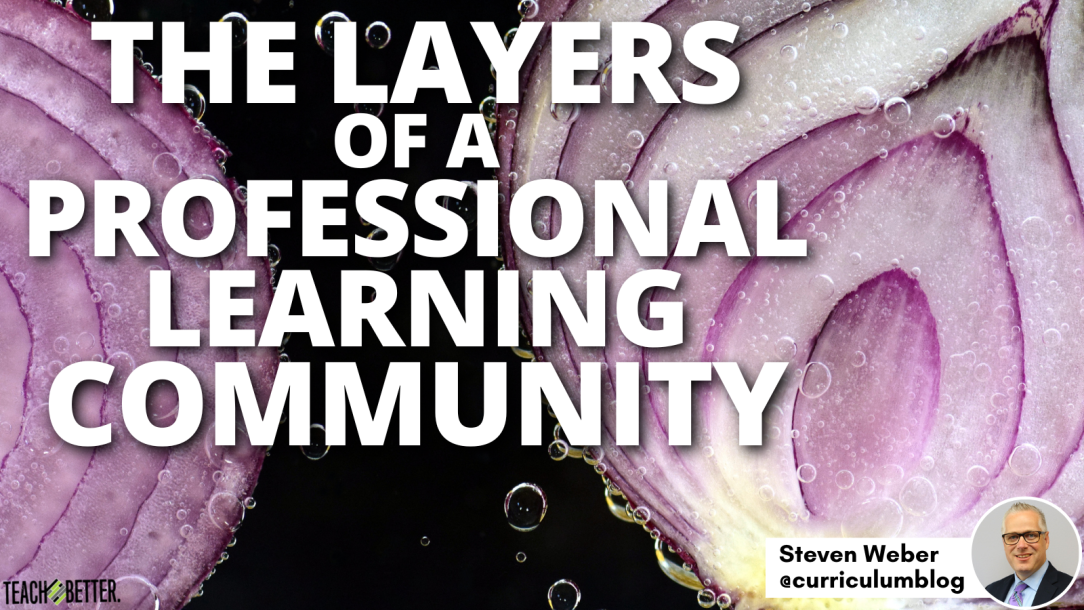TL;DR:
- Teachers now teach in collaboration as they network with other educators all around the world.
- If starting something new, make sure you put thought into how to lead change in a way that will sustain the initiative.
- Reserve time for reflection.
- Your team must trust one another to move anywhere together.
- Celebrate together as a team!
Professional Learning Communities
Teaching students who enter classrooms with multiple readiness levels and various strengths is a complex job. Over the past twenty years, there has been a shift from teaching in isolation to collaboration. Educators across the United States are committed to becoming a professional learning community (PLC). One of the leading organizations in the PLC movement is Solution Tree. “Professional learning communities (PLCs) are schools that empower educators to work collaboratively in recurring cycles of collective inquiry and action research to achieve better results for the students they serve” (DuFour, DuFour, Eaker, Many, & Mattos, 2016).
Becoming a PLC is not as easy as changing the master schedule or meeting for a weekly grade-level meeting. First, teacher teams and principals typically attend a PLC Institute, state conference, or host a Solution Tree consultant in their school district. Step one for school staff is deciding to become a professional learning community. This typically occurs in one of two ways: mandated/required or a collective commitment made by a group of teachers and staff in a school. The literature provided by Solution Tree and other professional organizations shows educators how to function as a PLC. The journey from day one towards continuous improvement and implementation is where school teams learn to ‘peel the onion.’
Layer 1: Change Leadership
One common misunderstanding is that a PLC is easy to implement if a majority of staff members are willing to collaborate and support one another during scheduled meetings. However, if a principal and the guiding coalition overlook the research on change leadership, the implementation will hit stormy seas before the end of the first semester. There are multiple approaches to change leadership in schools. Two common approaches used by high-performing school teams are outlined by John Kotter and Michael Fullan:
The 8 Steps for Leading Change
by John Kotter (1996)
The Six Secrets of Change
by Michael Fullan (2008)
Does your PLC have a plan for leading change or are you just drinking the PLC Kool-Aid?
Layer 2: Reflection
Does your school team schedule time for reflection? The urge to create the next product may interfere with the opportunity to reflect and improve future instruction. Several school teams are focused on building products. Often, team meetings are spent designing lesson plans, writing common formative assessments, developing a response to an intervention plan, or creating a video to support student understanding.
Teams need a balance between the process and the product. Costa and Kallick (2000) wrote, “Developing habits of continual growth and improvement requires self-reflection. As we as individuals, staff, and organizations reflect on our actions, we gain important information about the efficacy of our thinking.” Solution Tree provides several free tools to support team reflection. One tool is titled, “Learning Team Collaboration Survey” (Graham and Ferriter, 2010). Don’t make the mistake of assuming that continuous improvement is the result of meetings, meeting minutes, and team products. Reflection is a powerful tool for developing instructional strategies that meet the needs of all learners. Is your team spending more time planning, creating products, or reflecting?
Reflection is a powerful tool for developing instructional strategies that meet the needs of all learners. Is your team spending more time planning, creating products, or reflecting? Click To TweetLayer 3: The Trust On Our Team
When I was in elementary school, we had a Sunday school teacher who would end class with the faith fall, also known as a “trust fall.” We looked forward to falling backward and having our friends catch us. Our teacher was a former NFL football player so we had quite a bit of trust that we were not going to fall on the ground. I don’t recommend that teacher teams participate in a “trust fall” during the next planning period.
A team’s lack of trust is a major barrier to continuous improvement. When teachers do not trust one or more members of the team, the work becomes focused on attendance, note-taking, filling the time, and a lack of hard conversations. Often, the goal of the meeting is to attend a PLC, rather than become a professional learning community. If your team lacks trust and you have baggage from previous meetings, what can you do to begin supporting one another and having conversations that achieve better results for the students you serve? “A precondition for doing anything to strengthen our practice and improve a school is the existence of a collegial culture in which professionals talk about practice, share their craft knowledge, and observe and root for the success of one another” (Barth, 2006). Does your team root for the success of one another?
[scroll down to keep reading]Layer 4: Small Wins
Becoming a professional learning community is a challenging process. As this article has highlighted, the process involves change leadership, reflection, and trust. Some teams become focused on becoming the perfect PLC. No team is perfect and this is not a strategy. Becoming a professional learning community is a process. If the only way you measure success is end-of-year assessment data, meetings that avoid conflict, and the completion of lesson plans, your team will become frustrated and overwhelmed.
Small wins help teams celebrate throughout the school year, rather than waiting for the end of the quarter or a big moment. “Short-term wins don’t come about as the result of a little luck. They aren’t merely possibilities. People don’t just hope and pray for performance improvements. They plan for short-term wins, organize accordingly, and implement the plans to make things happen” (Kotter, 2012).
Develop small wins (weekly, every three weeks, etc.). When your team reaches a target, take time to celebrate. Enjoy the journey and celebrate that you are one step closer to a bigger goal. A professional learning community that fails to establish small wins is destined to fail.
5 Questions Teams Ask When They Peel the Onion:
- What are we committed to accomplishing this school year?
- What is one change that would improve student understanding?
- Do we trust one another?
- Does our calendar reflect our priorities? How are we spending our time?
- What small win did we have this week?
References
Barth, R. (2006). Improving relationships within the schoolhouse. Educational Leadership, 63(6), 8-13.
Costa, A., & Kallick, B. (2000). Getting into the habit of reflection. Educational Leadership, 57(7). 60-62.
DuFour, R., DuFour, R., Eaker, R., Many, T., & Mattos, M. (2016). Learning by doing: A handbook for professional learning communities at work (3rd ed.). Solution Tree Press.
Fullan, M. (2008). The six secrets of change: What the best leaders do to help their organizations survive and thrive. Jossey-Bass.
Graham, P., & Ferriter, B. (2010). Making teamwork meaningful: Leading progress driven collaboration in a PLC at work. Solution Tree Press.
Kotter, J. (1996). The 8 steps for leading change. Retrieved from https://www.kotterinc.com/methodology/8-steps/
Kotter, J. (2012). Leading Change. Harvard Business Review Press.
About Steven Weber
Dr. Steven Weber is the Associate Superintendent for Teaching and Learning with Fayetteville Public Schools (AR). His areas of research include curriculum design, formative assessment, professional learning, and school leadership.




